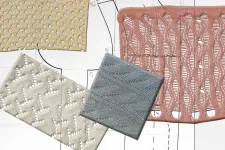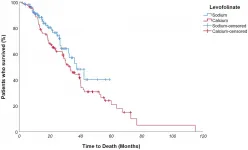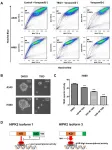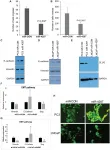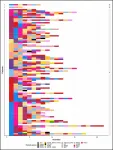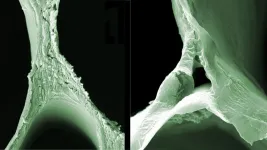(Press-News.org) Researchers have found that out of the more than 300 COVID-19 machine learning models described in scientific papers in 2020, none of them is suitable for detecting or diagnosing COVID-19 from standard medical imaging, due to biases, methodological flaws, lack of reproducibility, and 'Frankenstein datasets.'
The team of researchers, led by the University of Cambridge, carried out a systematic review of scientific manuscripts - published between 1 January and 3 October 2020 - describing machine learning models that claimed to be able to diagnose or prognosticate for COVID-19 from chest radiographs (CXR) and computed tomography (CT) images. Some of these papers had undergone the process of peer-review, while the majority had not.
Their search identified 2,212 studies, of which 415 were included after initial screening and, after quality screening, 62 studies were included in the systematic review. None of the 62 models was of potential clinical use, which is a major weakness, given the urgency with which validated COVID-19 models are needed. The results are reported in the journal Nature Machine Intelligence.
Machine learning is a promising and potentially powerful technique for detection and prognosis of disease. Machine learning methods, including where imaging and other data streams are combined with large electronic health databases, could enable a personalised approach to medicine through improved diagnosis and prediction of individual responses to therapies.
"However, any machine learning algorithm is only as good as the data it's trained on," said first author Dr Michael Roberts from Cambridge's Department of Applied Mathematics and Theoretical Physics. "Especially for a brand-new disease like COVID-19, it's vital that the training data is as diverse as possible because, as we've seen throughout this pandemic, there are many different factors that affect what the disease looks like and how it behaves."
"The international machine learning community went to enormous efforts to tackle the COVID-19 pandemic using machine learning," said joint senior author Dr James Rudd, from Cambridge's Department of Medicine. "These early studies show promise, but they suffer from a high prevalence of deficiencies in methodology and reporting, with none of the literature we reviewed reaching the threshold of robustness and reproducibility essential to support use in clinical practice."
Many of the studies were hampered by issues with poor quality data, poor application of machine learning methodology, poor reproducibility, and biases in study design. For example, several training datasets used images from children for their 'non-COVID-19' data and images from adults for their COVID-19 data. "However, since children are far less likely to get COVID-19 than adults, all the machine learning model could usefully do was to tell the difference between children and adults, since including images from children made the model highly biased," said Roberts.
Many of the machine learning models were trained on sample datasets that were too small to be effective. "In the early days of the pandemic, there was such a hunger for information, and some publications were no doubt rushed," said Rudd. "But if you're basing your model on data from a single hospital, it might not work on data from a hospital in the next town over: the data needs to be diverse and ideally international, or else you're setting your machine learning model up to fail when it's tested more widely."
In many cases, the studies did not specify where their data had come from, or the models were trained and tested on the same data, or they were based on publicly available 'Frankenstein datasets' that had evolved and merged over time, making it impossible to reproduce the initial results.
Another widespread flaw in many of the studies was a lack of involvement from radiologists and clinicians. "Whether you're using machine learning to predict the weather or how a disease might progress, it's so important to make sure that different specialists are working together and speaking the same language, so the right problems can be focused on," said Roberts.
Despite the flaws they found in the COVID-19 models, the researchers say that with some key modifications, machine learning can be a powerful tool in combatting the pandemic. For example, they caution against naive use of public datasets, which can lead to significant risks of bias. In addition, datasets should be diverse and of appropriate size to make the model useful for different demographic group and independent external datasets should be curated.
In addition to higher quality datasets, manuscripts with sufficient documentation to be reproducible and external validation are required to increase the likelihood of models being taken forward and integrated into future clinical trials to establish independent technical and clinical validation as well as cost-effectiveness.
INFORMATION:
In considering materials that could become the fabrics of the future, scientists have largely dismissed one widely available option: polyethylene.
The stuff of plastic wrap and grocery bags, polyethylene is thin and lightweight, and could keep you cooler than most textiles because it lets heat through rather than trapping it in. But polyethylene would also lock in water and sweat, as it's unable to draw away and evaporate moisture. This antiwicking property has been a major deterrent to polyethylene's adoption as a wearable textile.
Now, MIT engineers have spun polyethylene into fibers ...
The loss of glaciers worldwide enhances the breakdown of complex carbon molecules in rivers, potentially contributing further to climate change.
An international research team led by the University of Leeds has for the first time linked glacier-fed mountain rivers with higher rates of plant material decomposition, a major process in the global carbon cycle.
As mountain glaciers melt, water is channelled into rivers downstream. But with global warming accelerating the loss of glaciers, rivers have warmer water temperatures and are less prone to variable water flow and sediment movement. These conditions are then much more favourable for fungi to establish and ...
Ageing is a common factor in many diseases. So, what if it were possible to treat them by acting on the causes of ageing or, more specifically, by acting on the shortening of telomeres, the structures that protect chromosomes? This strategy is being pursued by the Telomeres and Telomerase Group of the Spanish National Cancer Research Centre (CNIO), which has already succeeded to cure pulmonary fibrosis and infarctions in mice by lengthening telomeres. Now they take a first step towards doing the same with renal fibrosis by demonstrating that short telomeres are at the origin of this disease, ...
Oncotarget published "Folinic acid in colorectal cancer: esquire or fellow knight? Real-world results from a mono institutional, retrospective study" which reported that the stock of therapeutic weapons available in metastatic colorectal cancer has been progressively grown over the years, with improving both survival and patients' clinical outcome: notwithstanding advances in the knowledge of mCRC biology, as well as advances in treatment, fluoropyrimidine antimetabolite drugs have been for 30 years the mainstay of chemotherapy protocols for this malignancy.
5-Fluorouracil seems to act differently depending on administration method: elastomer-mediated continuous infusion better inhibits Thymidylate ...
Oncotarget published "A novel isoform of Homeodomain-interacting protein kinase-2 promotes YAP/TEAD transcriptional activity in NSCLC cells" which reported that In this study, the authors show that a new HIPK2 isoform increases TEAD reporter activity in NSCLC cells.
They detected and cloned a novel HIPK2 isoform 3 and found that its forced overexpression promotes TEAD reporter activity in NSCLC cells.
Expressing HIPK2 isoform 3_K228A kinase-dead plasmid failed to increase TEAD reporter activity in NSCLC cells.
Next, they showed that two siRNAs targeting HIPK2 decreased HIPK2 isoform 3 and YAP protein levels in NSCLC cells.
In summary, this Oncotarget study indicates that HIPK2 isoform 3, the main HIPK2 isoform ...
The cover for issue 51 of Oncotarget features Figure 5, "miR-4287 overexpression regulates EMT in prostate cancer cell lines," published in "MicroRNA-4287 is a novel tumor suppressor microRNA controlling epithelial-to mesenchymal transition in prostate cancer" by Bhagirath, et al. which reported that the authors analyzed the role of miR-4287 in PCa using clinical tissues and cell lines.
Receiver operating curve analysis showed that miR-4287 distinguishes prostate cancer from normal with a specificity of 88.24% and with an Area under the curve of 0.66. Further, these authors found that miR-4287 ...
NEW YORK, NY (March 15, 2021)--A cytokine "hurricane" centered in the lungs drives respiratory symptoms in patients with severe COVID-19, a new study by immunologists at Columbia University Vagelos College of Physicians and Surgeons suggests.
Two cytokines, CCL2 and CCL3, appear critical in luring immune cells, called monocytes, from the bloodstream into the lungs, where the cells launch an overaggressive attempt to clear the virus.
Targeting these specific cytokines with inhibitors may calm the immune reaction and prevent lung tissue damage. Currently, one drug that blocks immune responses to CCL2 is being studied in clinical trials of patients with severe COVID-19.
Survivors of severe COVID-19, the study also found, had a greater abundance of antiviral T cells in their lungs ...
Philadelphia, March 15, 2021 - Biomarker testing surveys specific disease-associated molecules to predict treatment response and disease progression; however its use has complicated the diagnosis of non-small-cell lung cancer (NSCLC). In a new study in The Journal of Molecular Diagnosis, published by Elsevier, investigators provide for the first time a complete overview of biomarker testing, spanning multiple treatment lines, in a single cohort of patients.
Using exploratory data analysis and process-mining techniques in a real-world setting, investigators identified significant variation in test utilization and treatment. They also found that while ...
BOSTON - Researchers at Massachusetts General Hospital (MGH) have uncovered new clues that add to the growing understanding of how female mammals, including humans, "silence" one X chromosome. Their new study, published in Molecular Cell, demonstrates how certain proteins alter the "architecture" of the X chromosome, which contributes to its inactivation. Better understanding of X chromosome inactivation could help scientists figure out how to reverse the process, potentially leading to cures for devastating genetic disorders.
Female mammals have two copies of the X chromosome in all of their cells. Each X chromosome contains many genes, but only one of the pair ...
Ingo Burgert and his team at Empa and ETH Zurich has proven it time and again: Wood is so much more than "just" a building material. Their research aims at extending the existing characteristics of wood in such a way that it is suitable for completely new ranges of application. For instance, they have already developed high-strength, water-repellent and magnetizable wood. Now, together with the Empa research group of Francis Schwarze and Javier Ribera, the team has developed a simple, environmentally friendly process for generating electricity from a type of wood sponge, as they reported last week in the journal Science Advances.
Voltage through deformation
If you want to generate electricity ...
